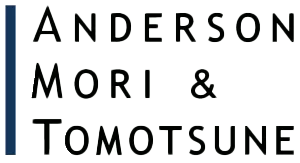In this case, Intellectual Property High Court (the "IPHC") ruled that a configuration of goods would be qualified as "an indication of goods" stipulated in Article 2, Paragraph 1, item1 of the Unfair Competition Prevention Act (the "Act") if: (i) such configuration of goods has a noticeable feature compared to other goods of the same kind (the "Noticeable Feature"); and (ii) such configuration of goods is well-known among consumers as an indication of the origin of the goods (the "Well-Known Indication").
The factual background of this case is as follows:
- Plaintiff sells chopsticks named
"Edison's Chopsticks" for little children to teach
them how to use chopsticks. The chopsticks have the following
features (the "Plaintiff's Configuration"):
- A pair of chopsticks is bound and connected at upper end or upper side;
- One of the chopsticks has two rings on a first finger and a second finger; and
- The other chopstick has a ring on a thumb.
- KJC Corporation, a third party in this case, manufactured and sold "Edison's Chopsticks" and Plaintiff had been a distributor of the goods, and sells around 50% of all of "Edison's Chopsticks" ;
- Defendant sold chopsticks named "Deluxe Training Chopsticks" (the "Defendant's Products"); and
- Plaintiff sought an injunction to prevent the production and distribution of the Defendant's Products, an order for disposal of Defendant's Products and a claim for damages on the ground that the Plaintiff's Configuration is qualified as "an indication of goods" stipulated in Article 2, Paragraph 1, item 1 of the Act, which is recognized as an indication of Plaintiff's goods, and Defendant used the Plaintiff's Configuration in the Defendant's Products, so that the indication causes confusion as to the origin.
As to the Plaintiff's assertion above, Tokyo District Court ruled that the Plaintiff's Configuration is not qualified as "an indication of goods" for the following reasons:
- Although a configuration of goods does not intrinsically have a purpose to indicate the origin of the goods, a configuration of goods would be qualified as "an indication of goods" stipulated in Article 2, Paragraph 1, item 1 of the Act if (i) it has the "Noticeable Feature" and (ii) the "Well-Known Indication";
- However, if a configuration which inevitably derives from a function of goods were protected as "an indication of goods," this would impede fair competition, and therefore, such a configuration is not qualified as "an indication of goods";
- The Plaintiff's configuration, on a whole, derives from an indispensable form to achieve the function to fix fingers at a proper position by the rings; and
- Therefore, Plaintiff's Configuration is not qualified as "an indication of goods."
Plaintiff appealed to the IP High Court. The IP High Court upheld the above judgment (1) and (2) of the Tokyo District Court and further stated as follows:
- Even if a configuration derives from a function of goods, as long as there is an alternative configuration of goods, the former configuration may be qualified as "an indication of goods". However, it would be rare that such a configuration has the "Noticeable Feature," and therefore, in many cases, such a configuration would not be qualified as "an indication of goods."; and
- Although the Plaintiff's configuration does not derive from an indispensable form to achieve the function, the Plaintiff's configuration should be regarded as a common form, and therefore, it lacks the "Noticeable Feature."
The findings of facts as to whether Plaintiff's configuration derives from an indispensable form to achieve the function are different between the judgments rendered by the Tokyo District Court and by the IPHC. However, it seems that the standard as to whether a configuration of goods is qualified as "an indication of goods" is the same in both judgments. Also the standard is substantially in line with the one adopted in other recent cases (e.g. IPHC, December 26, 2012, and Tokyo District Court, July 19, 2016).
Besides, it appears that the IPHC's judgment (5) above elaborates on the Tokyo District Court's criteria as to whether a configuration of goods is qualified as "an indication of goods."
The content of this article is intended to provide a general guide to the subject matter. Specialist advice should be sought about your specific circumstances.

